Sarnath Temples Located near the holy city of Varanasi, Sarnath Temples hold a treasured place in Buddhist history and spiritual travel. Sarnath is the location where Lord Buddha delivered his first sermon, setting the Wheel of Dharma in motion. The site has since been home to some of the most celebrated temples, stupas, and monuments, making it a significant spiritual destination for Buddhists and tourists alike. The Sarnath Temples are surrounded by greenery and an aura of peace, making it a perfect escape from the bustling city life.
Sarnath Temples Location
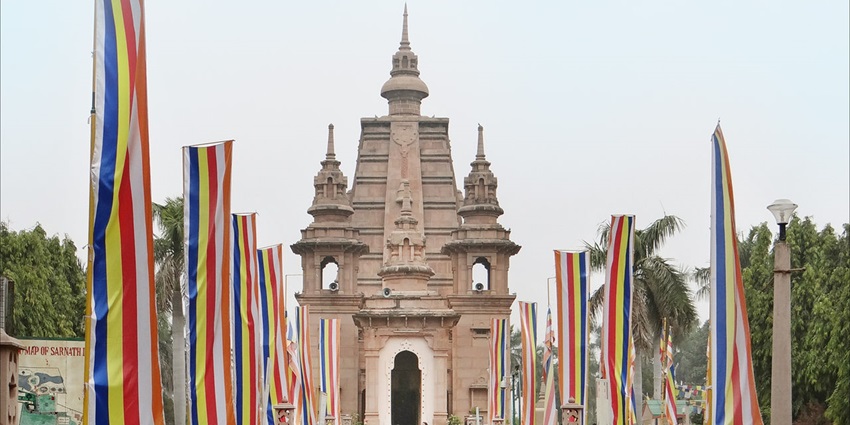
Photo: Jean-Pierre Dalbéra / Wikimedia Commons
Sarnath Temples are located about 10 kilometres northeast of Varanasi in Uttar Pradesh. Known for its tranquil environment and historical significance, Sarnath is easy to reach from Varanasi, a city well-connected by road, rail, and air. The temples and stupas at Sarnath are spread across a large archaeological complex, where visitors can explore not only the Sarnath Temples but also the surrounding Buddhist monuments.
Suggested Read: Temples In Uttar Pradesh
How To Reach Sarnath Temples
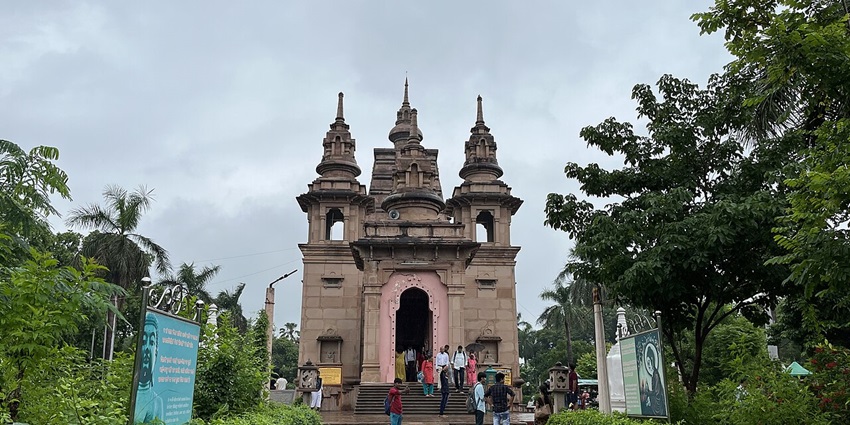
Photo: Innocentguyvikas / Wikimedia Commons
By Air: The nearest airport to Sarnath Temples is Lal Bahadur Shastri Airport in Varanasi, located around 24 kilometres away. Regular flights connect Varanasi to major Indian cities, making it an accessible destination.
By Train: Varanasi Junction is the nearest major railway station, providing connectivity to many parts of India. From the station, taxis and auto-rickshaws are readily available to reach Sarnath Temples.
By Road: Sarnath is well-connected by road, and frequent bus services are available from Varanasi. Travellers can also hire cabs or take local transport to reach the temples comfortably.
Places To Visit In And Around Sarnath Temples
Here are some popular places to explore in and around Sarnath Temples, each offering a unique glimpse into India’s historical and spiritual heritage:
1. Dhamek Stupa
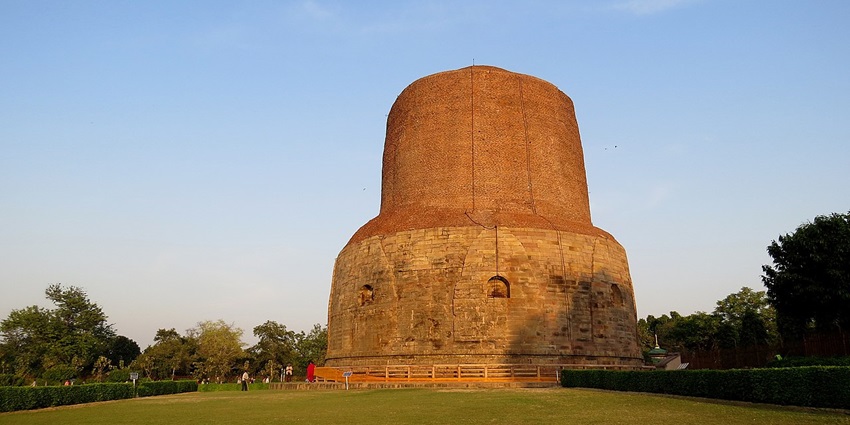
Photo: Preeti Prajapati / Wikimedia Commons
The Dhamek Stupa is one of the most significant Buddhist monuments located in Sarnath, marking the spot where Lord Buddha delivered his first sermon. This impressive structure stands at 43.6 metres tall and has a diameter of 28 metres, showcasing exquisite carvings of flowers and geometric patterns. The stupa was built in 500 CE and is believed to have been constructed over an earlier stupa from the 3rd century BCE. It draws numerous pilgrims and tourists, making it a popular destination near Sarnath Temples for anyone looking to delve into the essence of Buddhism.
Timings: 6 AM to 6 PM
Entry Fee: Free
Suggested Read: Jain Temples In Varanasi For A Unique Experience
2. Chaukhandi Stupa
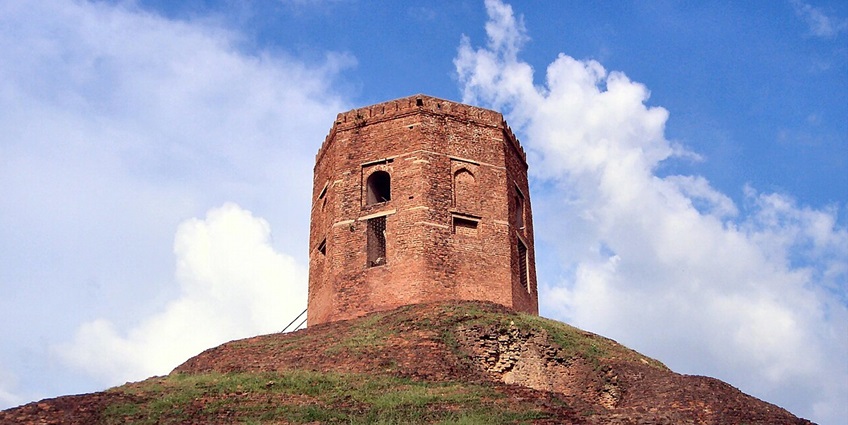
Photo: Christopher Walker / Wikimedia Commons
The Chaukhandi Stupa is a remarkable structure located just a short distance from the Sarnath Temples. Built during the Gupta period, this octagonal stupa commemorates the place where Buddha met his first disciples after attaining enlightenment. Its unique architectural style, characterised by an octagonal base and a square top, sets it apart from other stupas. Surrounded by greenery, the Chaukhandi Stupa offers a peaceful environment for visitors to meditate and reflect. The site also features a small museum where visitors can learn more about its history. This makes it a famous place near Sarnath that beautifully encapsulates Buddhist heritage.
Timings: 6 AM – 6 PM
Entry Fee: Free
3. Sarnath Archaeological Museum
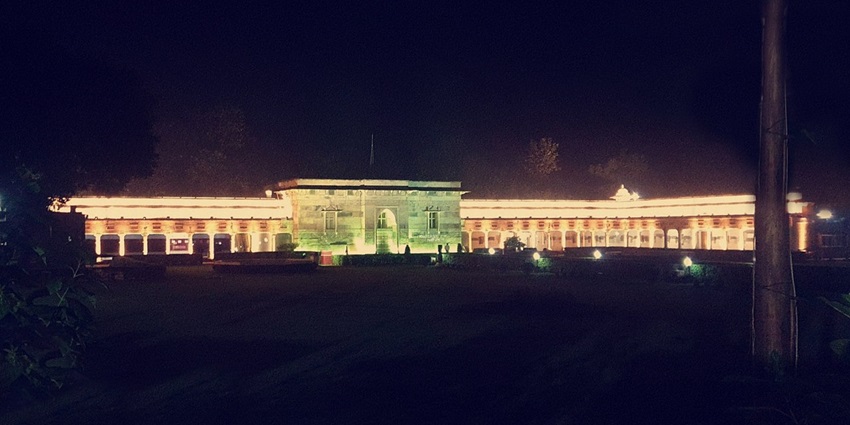
Photo: पाटलिपुत्र / Wikimedia Commons / image For Representation Only
The Sarnath Archaeological Museum is a must-visit for history enthusiasts and is one of the key attractions near the Sarnath Temples. The museum houses a vast collection of ancient artefacts, including sculptures, inscriptions, and Buddhist relics, many of which date back to the Mauryan period. The highlight of the museum is the famous Ashoka Pillar, featuring four majestic lions that have become a symbol of India. With informative displays and exhibitions, the Sarnath Archaeological Museum provides visitors with a comprehensive understanding of the rich history and culture of Buddhism.
Timings: 9 AM to 5 PM
Entry Fee: ₹5 for Indian Nationals, ₹100 for Foreign Nationals
Suggested Read: ISKCON Temples In Uttar Pradesh
4. Mulagandha Kuti Vihar
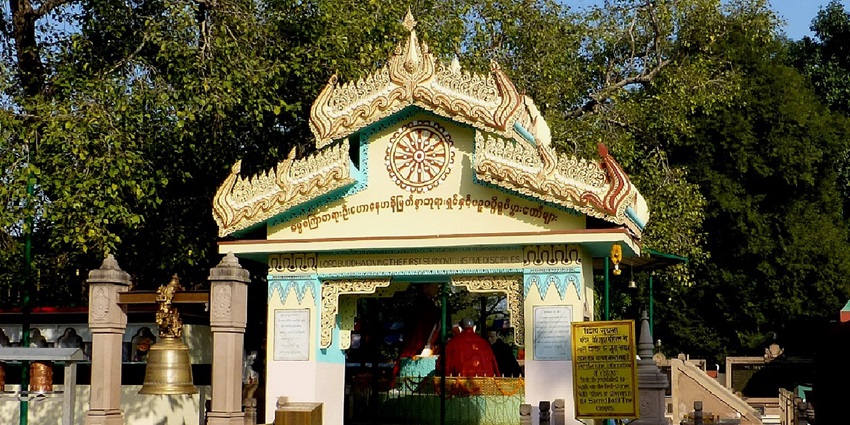
Photo: Hiroki Ogawa / Wikimedia Commons / Image For Representation Only
Mulagandha Kuti Vihar is a modern temple built by the Mahabodhi Society, located in close proximity to the Sarnath Temples. This temple is adorned with beautiful frescoes depicting scenes from the life of Lord Buddha, adding a contemporary touch to the ancient site. The tranquil environment and serene gardens surrounding the vihar make it an ideal spot for meditation and contemplation. Visitors can participate in prayer ceremonies and gain insights into Buddhist practices. This temple stands out as one of the best places near Sarnath for those interested in modern interpretations of ancient traditions.
Timings: 9 AM to 6 PM
Entry Fee: Free
5. Ashoka Pillar
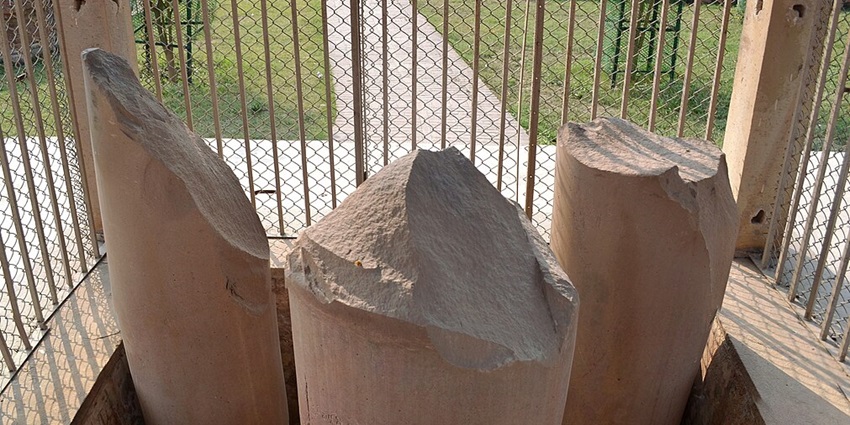
Photo: Tevaprapas / Wikimedia Commons / Image Representation Only
The Ashoka Pillar, a remarkable relic of India’s ancient history, is located at Sarnath and is a significant tourist attraction near Sarnath Temples. Erected by Emperor Ashoka in the 3rd century BCE, the pillar features the iconic four-lion capital, which now serves as the national emblem of India. This magnificent structure stands at about 15 meters tall and is a symbol of Buddhist heritage, representing peace and dharma. Visitors to the Ashoka Pillar can appreciate its historical significance while enjoying the serene surroundings. It’s an essential stop for anyone wishing to delve into India’s rich cultural past.
Timings: 6 AM to 6 PM
Suggested Read: Discovering Varanasi’s Ancient Art
Where To Stay

Photo: Pixabay / Pexels / Image For Representation Only
For those visiting Sarnath Temples, Varanasi offers a variety of accommodation options ranging from budget to luxury hotels. Some well-rated places to stay include Hotel Buddha and Suryauday Haveli, both known for their hospitality and comfort. Staying in Varanasi allows travellers to explore the city’s cultural essence while just a short drive from Sarnath Temples. Also, accommodations near the ghats provide easy access to attractions, including Kashi Vishwanath Temple and the evening Ganga Aarti.
Where To Eat

Photo: Pixabay / Pexels / Image For Representation Only
Visitors to Sarnath Temples will find several eateries around Varanasi offering a blend of local and international cuisine. For traditional Indian food, Baati Chokha is a highly recommended place. Kashi Chat Bhandar is perfect for tasting authentic Varanasi street food, while the Blue Lassi Shop is popular among tourists for its variety of delicious lassis. The nearby restaurants offer a delightful culinary experience that reflects the region’s rich flavours and culture, making dining around temples a memorable experience.
Suggested Read: Fatehpur Sikri Fort
Best Time To Visit
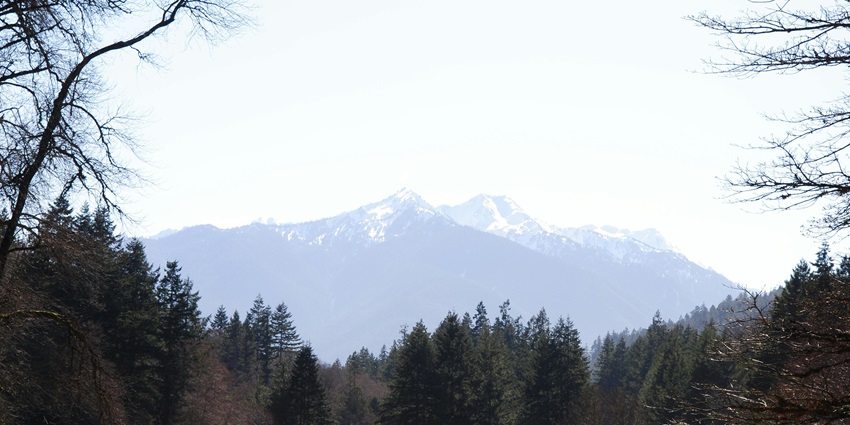
Photo: Peter Snyder / Pexels / Image For Representation Only
The best time to visit Sarnath Temples is from October to March, as the weather is cool and pleasant, ideal for exploring temples and nearby attractions. The winter months provide an enjoyable climate for visiting outdoor monuments, with temperatures ranging from 5°C to 15°C. Visiting Sarnath Temples during this time also allows travellers to experience local festivals and cultural events in Varanasi, adding depth to the spiritual experience. Summers can be extremely hot, and monsoons may disrupt travel plans due to heavy rains, so these seasons are best avoided.
Other Factors To Consider
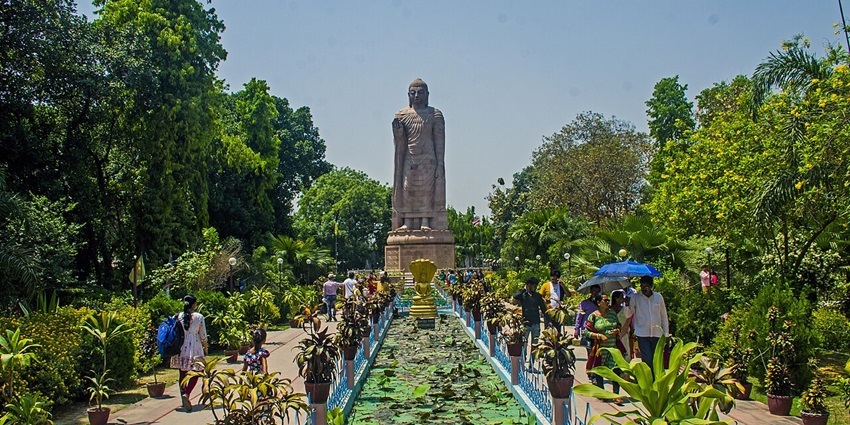
Photo: Rangan Datta Wiki / Wikimedia Commons / Image For Representation Only
Average Trip Cost To Sarnath Temples
A 2-3 days trip cost to Sarnath Temples can be between ₹8,000-₹15,000 per person, depending on accommodation and transportation preferences. Budget travellers can opt for mid-range hotels, while those seeking a more luxurious experience may prefer to stay at upscale hotels near the ghats. Entry to most Sarnath Temples is free, but fees apply for certain attractions like the Sarnath Archaeological Museum. Local transport costs and meals add to the expenses, but overall, a trip to Sarnath Temples is an affordable and enriching experience.
Tips For Travellers
- Dress modestly, as Sarnath Temples hold religious significance.
- Arrive early to enjoy the temples in a serene, less crowded setting.
- Respect the local customs and avoid disturbing ongoing rituals.
- Photography is allowed in some areas; check for restrictions before taking photos.
- Carry cash for small purchases and donations as some vendors might not accept cards.
Suggested Read: Forts In Uttar Pradesh
Visiting Sarnath Temples is more than a spiritual journey; it explores ancient history and Buddhist heritage. Whether you are a pilgrim or a history enthusiast, Sarnath Temples offers an experience that resonates personally and spiritually. When planning your journey, choose TripXL for customised travel packages and comprehensive itineraries to make your visit to Sarnath Temples unforgettable.
Cover Photo: Dhruvaeng / Wikimedia Commons


 WhatsApp
WhatsApp
 Twitter
Twitter









